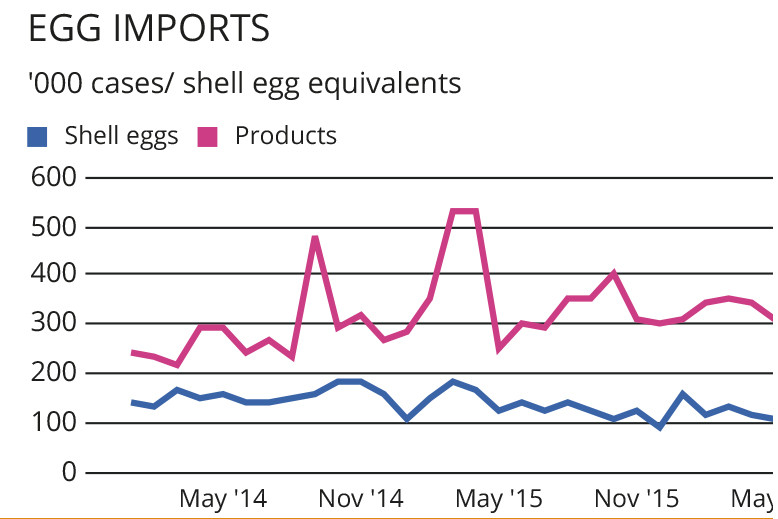MARKETS: Egg prices firm despite summer lull

Egg prices have bounced back during July and wholesale levels have improved for both colony and free-range.
Unusually for the middle of the summer, and despite the high level of egg supplies, the market has firmed up with the colony sector the most stretched.
“It’s awfully tight on the colony front,” said Central Egg Agency’s Andy Crossland. “We’ve seen quite a few birds go out at the moment and we’ve got issues across Europe as well. Supplies are short and prices have moved on.”
Headline prices on colony at the agency have gained around 10p/doz since our last issue on the top three sizes. Free-range prices at CEA are up by 5p/doz.
“We’re stuck in the summer holidays, but even on free range we’ve seen the larger grades tighten up and trading well.”
There was still a bit of medium and small on offer, he said, due to new flocks coming through and expansion: “There could be issues with free range moving forwards, but hopefully retail will absorb it once we get past the holiday season.”
With free-range sales gaining at the expense of colony on the supermarket shelf, any further expansion in the colony sector was unlikely: “If anything, numbers are going to reduce.”
An additional factor supporting the UK market was the insecticide contamination scare in the Netherlands, where almost 200 units have been at least temporarily put under restriction (see p6).
“When the UK market gets this tight for colony a lot of wholesalers will look abroad, and if its not readily available it’s bound to strengthen prices,” he said.
In an unexpected development, Defra has revised its data for barn egg production since the start of this year, and is now showing a sharp fall in barn egg production during May and June (see chart alongside). With some colony units starting to look at barn afresh, against the prospect of retailers ultimately phasing out colony eggs, this is arguably the opposite of what would have been predicted. The alternative is for supermarkets to commit entirely to free-range.













